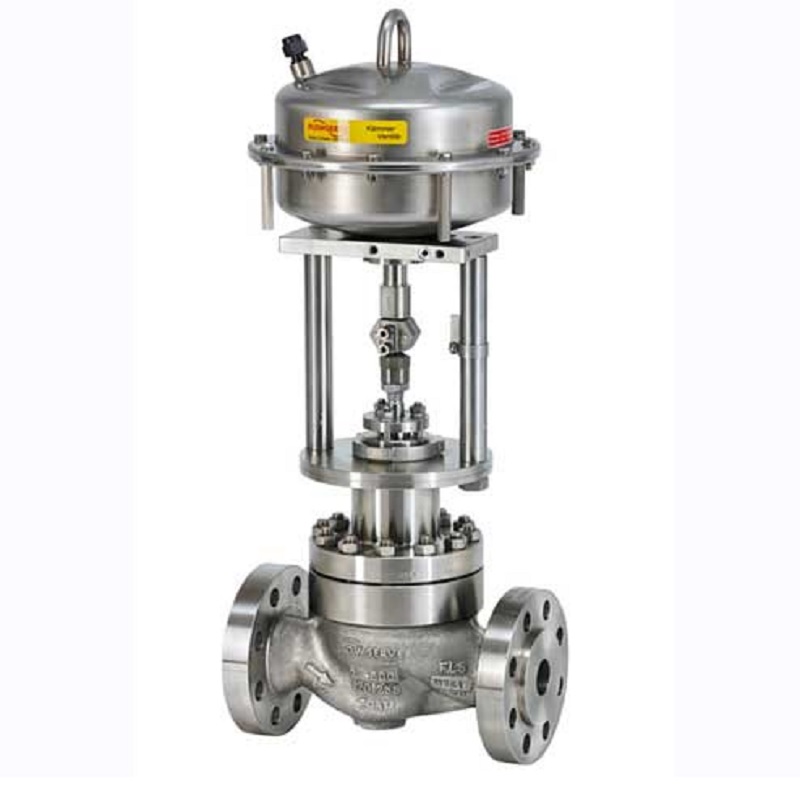Cutting-edge Control Valves: Enhancing Precision and Reliability
Cutting-edge Control Valves: Enhancing Precision and Reliability
Blog Article

Maximize Power Financial Savings and Convenience With Advanced Building Automation Controls
In the world of contemporary architecture and center administration, the combination of sophisticated structure automation regulates stands as a critical improvement. The convergence of technology and sustainability has birthed a brand-new age where energy effectiveness, comfort optimization, and functional streamlining are no much longer possible realities however far-off ambitions. By taking advantage of the power of automation, structures can adjust, respond, and progress in manner ins which were once inconceivable. The possibility for significant energy financial savings and improved convenience is not simply a guarantee however an opportunity waiting to be fulfilled. This paradigm change in building administration holds the vital to opening a world where ecological conscientiousness and owner well-being harmoniously exist together within the walls of our frameworks.
Power Efficiency Perks
Power effectiveness benefits can considerably decrease power usage and functional prices in buildings. Energy-efficient systems, such as sophisticated building automation controls, can maximize the use of resources like cooling, lights, and heating, leading to lower energy expenses over time.
Moreover, enhanced energy efficiency can prolong the lifespan of structure tools and systems. By operating extra effectively, heating and cooling systems, lighting fixtures, and other structure elements experience much less wear and tear, leading to decreased upkeep and substitute expenses. Additionally, energy-efficient buildings usually command higher property values and rental rates, giving long-term monetary advantages to proprietors.
Furthermore, power performance can boost resident comfort and productivity. Effectively regulated indoor atmospheres with optimum illumination and thermal problems create a more pleasant and conducive work space, causing enhanced staff member satisfaction and efficiency. On the whole, the energy effectiveness benefits related to innovative building automation controls are diverse, including cost savings, ecological stewardship, and resident health.
Enhanced Convenience Control
Enhancing convenience control in building environments calls for a sophisticated integration of innovative automation systems for optimal owner wellness. By using innovative building automation controls, facilities can customize the indoor atmosphere to meet the specific demands and preferences of owners. control valves.
Enhanced convenience control surpasses standard temperature level changes. It includes functions such as personalized setups, occupancy sensing units, and natural light utilization to create a responsive and vibrant environment. By integrating these innovative controls, structures can not only improve comfort yet also improve power efficiency by maximizing system operations based on real tenancy and usage patterns. Inevitably, focusing on passenger comfort with advanced automation systems results in an extra enjoyable and much healthier interior environment.
Functional Performance Improvements

Moreover, the implementation of real-time monitoring and analytics devices allows building operators to determine power inadequacies and functional anomalies without delay. By continuously keeping track of power use patterns and system performance metrics, adjustments can be made in real-time to maximize energy consumption and ensure peak functional effectiveness. control valves. Furthermore, integrating need action techniques into structure automation controls can better read the article enhance operational efficiency by dynamically adjusting power usage based upon grid conditions and pricing signals
Indoor Environment Optimization
Reliable indoor climate optimization is a basic facet of structure automation controls, making certain passengers' convenience and wellness while making best use of power cost savings. By using advanced sensing units and controls, building automation systems can constantly check and adjust temperature level, humidity levels, air top quality, and ventilation to produce an optimal indoor atmosphere. Preserving comfy and constant problems not just boosts owner fulfillment but also boosts efficiency and total health.
Indoor environment optimization additionally plays a critical function in energy efficiency. By fine-tuning heating, ventilation, and air conditioning systems based on real-time data and occupancy patterns, building automation controls can significantly reduce power usage - control valves. For example, executing strategies such as demand-controlled ventilation and thermal zoning can assist reduce energy waste while making certain that each location of the structure receives the essential conditioning.

Sustainable Atmosphere Development
Structure automation controls not only maximize indoor climate problems for energy performance and passenger convenience but likewise lay the foundation for creating a sustainable environment with critical monitoring of resources and systems. By incorporating advanced building automation modern technologies, their website such as sensing units, actuators, and intelligent software application, centers can readjust and monitor power use in real-time to minimize waste and minimize their carbon impact. These systems enable anticipating upkeep, recognizing possible issues prior to they intensify and maximizing devices efficiency to enhance longevity and effectiveness.
In addition, sustainable environment production expands beyond power monitoring to incorporate water conservation, waste reduction, and interior air quality enhancement. Structure automation controls can control water usage, identify leakages, and ensure correct waste disposal techniques, adding to overall sustainability initiatives. In addition, by checking and managing ventilation and filtering systems, these technologies boost resident health and wellness and performance while lowering energy intake related to HVAC operations.
Conclusion
In verdict, progressed building automation manages deal significant benefits in terms of power savings, convenience control, functional performance, interior environment optimization, and producing a sustainable setting. By implementing these controls, buildings can attain optimal performance while reducing energy usage and enhancing resident comfort. It is evident that using sophisticated automation innovation is vital in improving structure efficiency and developing an extra lasting future.
Power performance advantages can substantially lower power intake and operational prices in buildings. On the whole, the power efficiency benefits linked with advanced building automation controls are complex, incorporating price savings, environmental stewardship, and owner well-being.
Furthermore, including demand feedback techniques right into building automation controls can additionally boost operational performance by dynamically readjusting energy use based on grid conditions and rates news signals.
Building automation manages not just maximize interior environment problems for power performance and occupant comfort yet additionally lay the foundation for developing a lasting setting through tactical monitoring of systems and resources.In final thought, progressed building automation regulates deal substantial benefits in terms of power cost savings, convenience control, functional efficiency, interior environment optimization, and creating a sustainable atmosphere.
Report this page